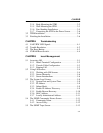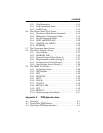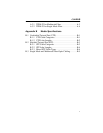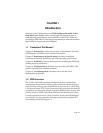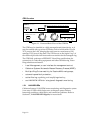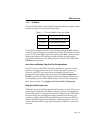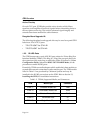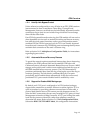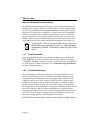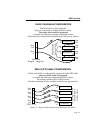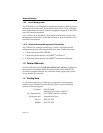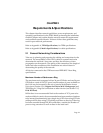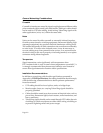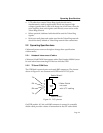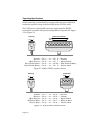
STHI Overview
Page 1-6
Improved Protection from Beaconing
1
By utilizing multiple Ring Out TCU ports, users can provide enhanced
reliability for existing networks which use passive MAUs because Ring
Out TCU ports allow for the separate attachment of each MAU. Rather
than daisy-chaining MAUs together as a single entity and risking their
collective isolation in case of beaconing, the user can now attach each
MAU individually, reducing the number of MAU ports that are at risk;
ABRP is able to bypass individual Ring Out-to-MAU connections on an
individual basis, leaving other workgroups unaffected. See Figure 1-2.
The Ring Out TCU configuration does not provide for the
MAU’s redundant connection to the ring. To achieve dual
attachment to a MAU, use the Ring In and Ring Out TPIM
ports.
1.2.7 Flash Downloads
New and updated firmware may be downloaded into the STHI hub’s
Flash EPROMs. This process may be executed by Cabletron’s Remote
LANVIEW/Windows, version 3.0 or later, or by any device using BOOTP
or TFTP protocols. Refer to Section 5.9.11,
Firmware Image Downloads
,
for download instructions.
1.2.8 IP Address Discovery
The STHI supports IP Address Discovery. Through a BootP server (a
network device that holds a user-defined list of MAC addresses and
corresponding IP addresses), network managers may attribute an IP
address to any known MAC address. When the STHI is powered up
without an IP address and IP Address Discovery is enabled, it issues
BootP requests at user-set intervals, essentially asking “does anybody
know my name?” If the BootP server recognizes the MAC address, it tells
the STHI what IP address has been attributed to it. If no BootP sever
responds after 500 request cycles, the STHI automatically boots from its
own FLASH memory and remains without an IP address until a user
provides one through the Local Management interface.
Each STHI has on its backplate a sticker which indicates its MAC address.
NOTE



